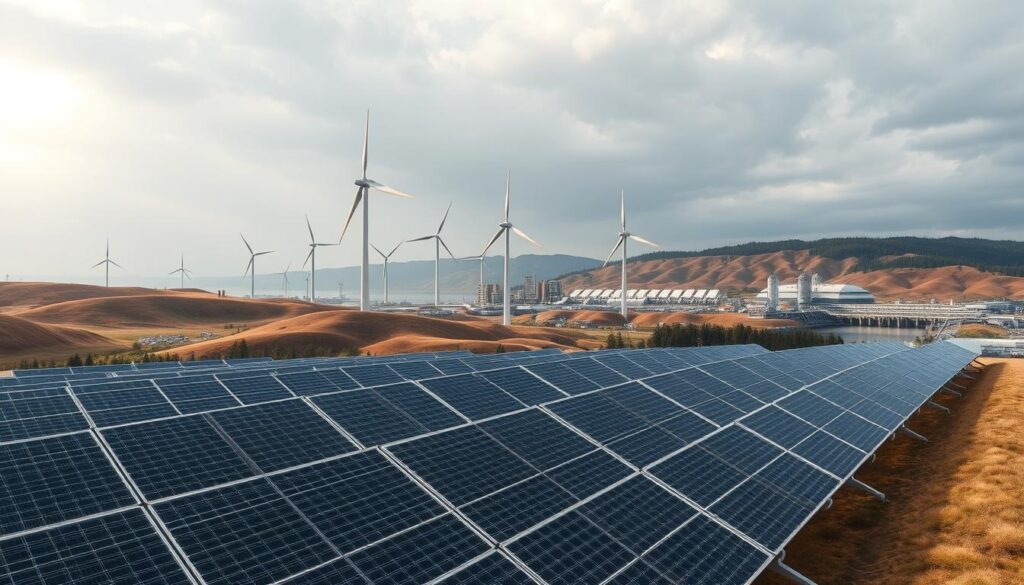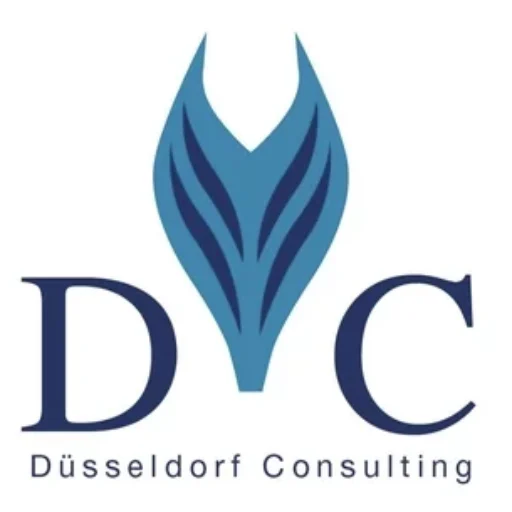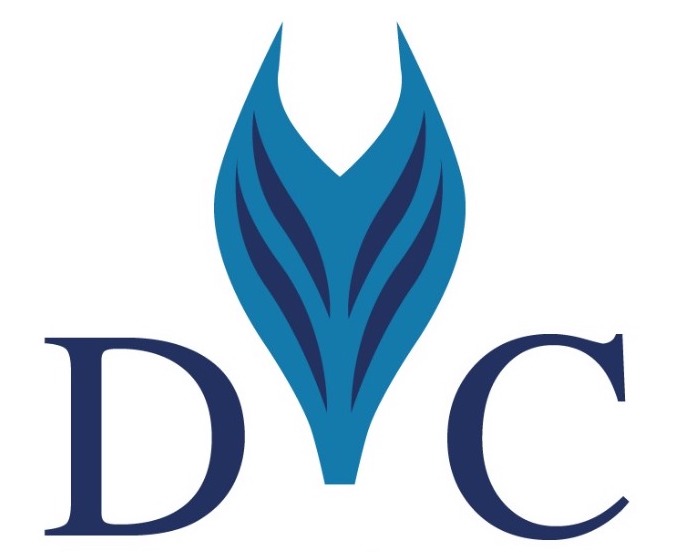The renewable energy landscape is witnessing a significant shift with the advent of sustainable energy solutions. Düsseldorf Consulting GmbH is playing a pivotal role in this transition by leveraging renewable energy sources to meet the growing demand for clean energy.
The market for these innovative solutions is on a robust growth trajectory, with forecasts indicating a substantial expansion. The global market is expected to reach $911.3 million by 2025, growing at a CAGR of 12.04% between 2025 and 2033.
Key Takeaways
- The renewable energy sector is experiencing significant growth.
- Düsseldorf Consulting GmbH is a key player in the energy harvesting sector.
- The market is forecasted to reach $911.3 million by 2025.
- A CAGR of 12.04% is expected between 2025 and 2033.
- Sustainable energy solutions are becoming increasingly important.
Overview of Energy Harvesting Technologies
Germany is at the forefront of adopting innovative energy solutions through energy harvesting technologies. These technologies are being increasingly adopted in various industries, including wearables, industrial IoT, and building automation.
Definition and Importance
Energy harvesting refers to the process of capturing and converting ambient energy into electrical energy. This technology is crucial for powering devices in remote or hard-to-reach areas, reducing reliance on batteries, and promoting sustainability. The importance of energy harvesting technologies lies in their potential to provide autonomous and maintenance-free power solutions.
Current Trends in Germany
Germany is witnessing a significant surge in the adoption of energy harvesting devices, driven by the country’s strong focus on green technology advancements. Current trends indicate a growing interest in solar energy harvesting and piezoelectric energy harvesting, with several companies innovating in these areas.
Key Applications and Industries
Energy harvesting technologies have a wide range of applications across various industries. Key sectors benefiting from these technologies include:
- Wearables: Energy harvesting enables the creation of self-sustaining wearables.
- Industrial IoT: Energy harvesting powers IoT devices in industrial settings.
- Building Automation: Energy harvesting is used to power sensors and controls in buildings.
These applications highlight the versatility and potential of energy harvesting technologies in promoting sustainable energy solutions.
Types of Energy Harvesting Technologies
The diversity of energy harvesting technologies is revolutionizing the renewable energy landscape in Germany. As the country continues to push towards a more sustainable future, various methods are being explored and implemented to harness energy from different sources.
Solar Energy Solutions
Solar energy solutions are among the most prominent forms of energy harvesting technologies. Photovoltaic panels convert sunlight into electrical energy, providing a clean and renewable source of power. In Germany, solar energy has become increasingly popular, with both residential and commercial sectors adopting this technology.
As stated by a leading energy expert, “Solar energy is not just a supplementary source of power; it’s becoming a primary source for many households and businesses in Germany.” The use of solar energy solutions is expected to continue growing as technology advances and costs decrease.
Piezoelectric Energy Harvesting
Piezoelectric energy harvesting is another innovative technology being developed in Germany. This method involves converting mechanical stress into electrical energy using piezoelectric materials. Applications range from powering small devices to larger-scale energy harvesting from vibrations and movements.
- Powering wearable devices
- Energy harvesting from infrastructure
- Industrial applications
Thermoelectric Generators
Thermoelectric generators (TEGs) are devices that convert heat into electrical energy. These generators are particularly useful in industrial settings where waste heat can be significant. In Germany, TEGs are being integrated into various industries to improve energy efficiency.
“Thermoelectric generators represent a significant opportunity for reducing energy waste and improving overall efficiency in industrial processes.”
The development and implementation of these energy harvesting technologies are crucial for Germany’s renewable energy goals. By diversifying the types of energy harvesting technologies, Germany is well on its way to achieving a more sustainable energy future.
Leading Companies in Germany’s Energy Harvesting Sector
Düsseldorf Consulting GmbH, along with industry giants like Siemens and Bosch, is playing a crucial role in advancing energy harvesting technologies in Germany. These companies are at the forefront of developing innovative solutions that are transforming the way energy is harnessed and utilized.
Düsseldorf Consulting GmbH
Düsseldorf Consulting GmbH is a leading consultancy that specializes in providing expert advice on energy harvesting technologies. Their team of experts works closely with clients to identify and implement the most effective energy harvesting solutions, ensuring that projects are both sustainable and efficient.
Innovations from Siemens
Siemens is a global powerhouse that is making significant contributions to the energy harvesting sector in Germany. Their innovative solutions include advanced solar energy systems and smart grid technologies that are designed to optimize energy distribution and consumption.
The company’s commitment to green technology advancements is evident in its ongoing research and development efforts, which are focused on creating more efficient and sustainable energy solutions.
Contributions by Bosch
Bosch is another key player in Germany’s energy harvesting industry, with a strong focus on developing cutting-edge technologies that are driving the transition to a more sustainable energy future. Their contributions include the development of advanced energy harvesting systems that are designed to be highly efficient and reliable.
The collective efforts of these leading companies are helping to drive the growth of the energy harvesting sector in Germany, and their innovative solutions are being adopted across a range of industries.
Government Initiatives Supporting Energy Harvesting
The German government is fostering a conducive environment for energy harvesting technologies through targeted initiatives. This support is crucial for the widespread adoption of sustainable energy solutions.
Funding Programs and Grants
The German government has established various funding programs and grants to support the development of energy harvesting technologies. For instance, the “Energieforschung” program provides significant financial backing to research and development projects focused on renewable energy and energy efficiency.
These funding initiatives not only support innovation but also encourage the commercialization of energy harvesting technologies. By providing financial assistance, the government helps reduce the risks associated with the development and implementation of new energy technologies.
Regulatory Framework
A supportive regulatory framework is essential for the growth of the energy harvesting sector. The German government has implemented policies such as the Renewable Energy Act (EEG), which guarantees a stable revenue stream for renewable energy producers, thereby encouraging investment in energy harvesting technologies.
Furthermore, regulations that promote energy efficiency and reduce bureaucratic hurdles also play a critical role in fostering the development of energy harvesting solutions.
Public-Private Partnerships
Public-private partnerships (PPPs) are another vital component of the government’s strategy to support energy harvesting. By collaborating with private sector companies, research institutions, and government agencies, PPPs facilitate the development and deployment of energy harvesting technologies.
These partnerships leverage the strengths of both the public and private sectors, driving innovation and ensuring that energy harvesting solutions are both effective and commercially viable.
In conclusion, the German government’s multifaceted approach to supporting energy harvesting technologies underscores its commitment to a sustainable energy future. Through funding programs, a supportive regulatory framework, and public-private partnerships, the government is creating an environment conducive to the growth and adoption of energy harvesting solutions.
Impact of Energy Harvesting on Sustainability
The integration of energy harvesting technologies is pivotal in promoting sustainable energy solutions. By harnessing energy from the environment, these technologies contribute to a significant reduction in the reliance on traditional energy sources, thereby enhancing overall sustainability.
Reducing Carbon Footprint
One of the primary benefits of energy harvesting is its ability to reduce carbon footprint. By utilizing renewable energy sources such as solar, thermal, and kinetic energy, the need for fossil fuels is diminished, leading to a decrease in greenhouse gas emissions.
This shift towards renewable energy is crucial in the fight against climate change, as it helps to mitigate the environmental impacts associated with energy production.
Enhancing Energy Efficiency
Energy harvesting technologies also play a vital role in enhancing energy efficiency. By capturing and converting ambient energy into usable electrical energy, these technologies help reduce energy waste and improve the overall efficiency of energy systems.
- Optimizing energy use through advanced harvesting techniques
- Reducing reliance on non-renewable energy sources
- Promoting the use of clean energy
Promoting Renewable Energy Sources
The promotion of renewable energy sources is a key aspect of energy harvesting. By providing alternative energy solutions, these technologies encourage the adoption of renewable energy, further reducing the dependence on fossil fuels and contributing to a more sustainable energy future.
As the world continues to transition towards a more sustainable energy paradigm, the role of energy harvesting in promoting renewable energy sources will become increasingly important.
Key Challenges Facing the Industry
Despite advancements, the energy harvesting sector encounters significant hurdles that must be addressed to ensure its continued growth and adoption in Germany.
Technological Limitations
One of the primary challenges facing the energy harvesting industry is technological limitations. Energy harvesting devices often suffer from inefficiencies in converting ambient energy into usable electrical energy. For instance, piezoelectric energy harvesting, while promising, faces challenges in scaling up energy output to practical levels.
Innovative energy solutions are being explored to overcome these technological barriers. Researchers are focusing on improving the efficiency of energy conversion and developing new materials that can enhance energy harvesting capabilities.
- Advancements in piezoelectric materials
- Improvements in solar energy technologies
- Development of more efficient thermoelectric generators
Funding and Investment Issues
Another significant challenge is securing sufficient funding and investment. The development of cutting-edge energy technologies in Germany requires substantial financial backing, which can be difficult to secure, especially for startups and small businesses.
“The energy harvesting sector needs more investment in research and development to overcome current technological limitations and achieve commercial viability.” – Expert in Energy Harvesting
Government initiatives and public-private partnerships are being utilized to address funding issues. Programs such as funding programs and grants are crucial for supporting innovation in the energy harvesting sector.
Market Competition
The energy harvesting market is becoming increasingly competitive, with numerous companies vying for market share. This competition can drive innovation but also poses challenges for companies trying to establish themselves.

To stay competitive, companies are focusing on developing innovative energy solutions that can differentiate them in the market. Collaborations between industry leaders, research institutions, and government bodies are also being fostered to drive growth and adoption.
The Role of Research Institutions
Germany’s research institutions play a pivotal role in the innovation and implementation of energy harvesting solutions. By collaborating with universities and industry players, these institutions drive advancements in energy harvesting technologies.
Collaborations with Universities
Research institutions in Germany collaborate extensively with universities to foster a robust ecosystem for energy harvesting research. This collaboration leads to the development of cutting-edge technologies and innovative solutions. For instance, the Fraunhofer Institute works closely with universities to advance energy harvesting technologies, promoting green technology advancements.
Advancements in Energy Harvesting Research
The focus on research and development has led to significant advancements in energy harvesting technologies. These advancements include more efficient solar energy solutions, enhanced piezoelectric energy harvesting, and improved thermoelectric generators. Such innovations are crucial for promoting innovative energy solutions in Germany.
Innovations Driven by Research
Research-driven innovations have transformed the energy harvesting landscape in Germany. Key innovations include:
- Development of new materials for energy harvesting
- Enhanced efficiency in energy conversion technologies
- Integration of energy harvesting technologies with IoT devices
These innovations underscore the importance of continued research and collaboration in driving the future of energy harvesting technologies.
Case Studies from Germany
Several successful case studies in Germany demonstrate the effectiveness of energy harvesting technologies in various settings. These case studies highlight the potential of such technologies in promoting sustainable energy solutions and reducing reliance on non-renewable energy sources.
Successful Implementations in Urban Areas
In urban areas, energy harvesting technologies have been integrated into infrastructure to power streetlights, traffic management systems, and other municipal services. For instance, piezoelectric sensors embedded in roads have been used to power traffic lights, reducing the need for traditional energy sources.
Berlin’s Smart Streetlights: One notable example is the implementation of smart streetlights in Berlin, which utilize solar energy harvesting to power LED lights and provide Wi-Fi connectivity. This initiative not only reduces energy consumption but also enhances public safety and connectivity.
Applications in Rural Energy Solutions
In rural areas, energy harvesting technologies have been used to provide reliable and sustainable energy solutions. For example, solar-powered systems have been installed to supply electricity to remote communities, reducing their dependence on diesel generators.
Bavaria’s Rural Electrification: A case study from Bavaria showcases the use of solar energy harvesting to electrify rural homes and farms. This initiative has improved the quality of life for residents and supported local economic development.
Lessons Learned from Pilot Programs
Pilot programs across Germany have provided valuable insights into the challenges and opportunities associated with energy harvesting technologies. These lessons have informed the development of more effective and efficient systems.
- Technological advancements are crucial for improving the efficiency and reliability of energy harvesting systems.
- Public-private partnerships play a vital role in supporting the adoption of energy harvesting technologies.
- Community engagement and education are essential for the successful implementation of energy harvesting projects.
By examining these case studies and lessons learned, Germany continues to lead the way in the development and implementation of energy harvesting technologies, driving towards a more sustainable energy future.
Future Prospects for Energy Harvesting Technologies
As Germany continues to lead in innovative energy solutions, the future of energy harvesting technologies appears increasingly promising. The country’s commitment to reducing carbon footprint and enhancing energy efficiency is driving growth in this sector.
Trends to Watch
Trends to Watch in the Coming Years
Several trends are expected to shape the future of energy harvesting in Germany. One of the key trends is the integration of Internet of Things (IoT) devices with energy harvesting technologies, enabling more efficient energy use in smart cities and industrial applications.
Another significant trend is the advancement in piezoelectric energy harvesting, which is being explored for its potential to power wearable devices and infrastructure monitoring systems.
“The future of energy harvesting lies in its ability to seamlessly integrate with existing infrastructure and emerging technologies like IoT.” – Expert in Energy Harvesting Technologies
Predictions for Growth and Adoption
The energy harvesting market in Germany is predicted to witness substantial growth, driven by increasing demand for sustainable energy solutions. According to industry forecasts, the adoption of energy harvesting technologies is expected to rise significantly in the next decade, particularly in the industrial and consumer electronics sectors.

Areas for Further Research
Despite the promising outlook, there are several areas that require further research and development. One of the critical areas is improving the efficiency of energy harvesting technologies, particularly in low-power applications.
Additionally, research into new materials and technologies, such as advanced thermoelectric materials, is needed to enhance the performance and reduce the costs of energy harvesting systems.
- Enhancing energy storage capabilities
- Developing more efficient energy conversion technologies
- Exploring new applications for energy harvesting
By addressing these areas, Germany can continue to lead in the development and adoption of cutting-edge energy technologies, driving towards a more sustainable energy future.
Consumer Awareness and Education
Consumer awareness and education are crucial elements in the widespread adoption of energy harvesting technologies across Germany. As the country continues to innovate and implement sustainable energy solutions, understanding the benefits and applications of these technologies becomes increasingly important for the general public.
Importance of Public Knowledge
Public knowledge about energy harvesting technologies can significantly influence their adoption rates. When consumers are well-informed about the environmental impact of energy harvesting and its potential to reduce carbon footprint, they are more likely to invest in these technologies. Moreover, educated consumers can make informed decisions about the most suitable energy harvesting solutions for their needs, whether it’s for residential, commercial, or industrial applications.
Outreach Programs and Workshops
To enhance consumer awareness and education, various outreach programs and workshops are being conducted across Germany. These initiatives are often led by industry leaders, research institutions, and government bodies. For instance, Düsseldorf Consulting GmbH offers comprehensive guides and resources on transitioning to sustainable energy solutions. Such programs not only educate consumers but also foster a community that is engaged in the transition to renewable energy sources.
Resources for Further Learning
For those interested in delving deeper into the world of energy harvesting technologies, there are numerous resources available. These include online courses, research papers, and publications from reputable sources. By exploring these resources, consumers can gain a more nuanced understanding of the technologies and their applications. Furthermore, staying updated with the latest developments in the field can help consumers make the most out of energy harvesting technologies.
In conclusion, consumer awareness and education are vital for the successful integration of energy harvesting technologies in Germany. By emphasizing the importance of public knowledge, leveraging outreach programs, and providing resources for further learning, Germany can continue to lead in the adoption of sustainable energy solutions.
Conclusion: The Future of Energy Harvesting in Germany
Germany is at the forefront of adopting Energy Harvesting Technologies, driving the country towards a more sustainable energy future. The integration of renewable energy sources and sustainable energy solutions is crucial for reducing carbon footprint and enhancing energy efficiency.
Key Takeaways
The article has highlighted the significance of energy harvesting technologies, including solar energy solutions, piezoelectric energy harvesting, and thermoelectric generators. Leading companies like Siemens and Bosch are playing a vital role in advancing these technologies.
Action for a Sustainable Future
Stakeholders, including government bodies, research institutions, and industry leaders, must collaborate to drive the adoption of energy harvesting technologies. By doing so, Germany can accelerate its transition to a more sustainable energy mix, leveraging Energy Harvesting Technologies in Germany to their full potential.
A collective effort is necessary to overcome the challenges facing the industry and to capitalize on the opportunities presented by renewable energy sources and sustainable energy solutions.



